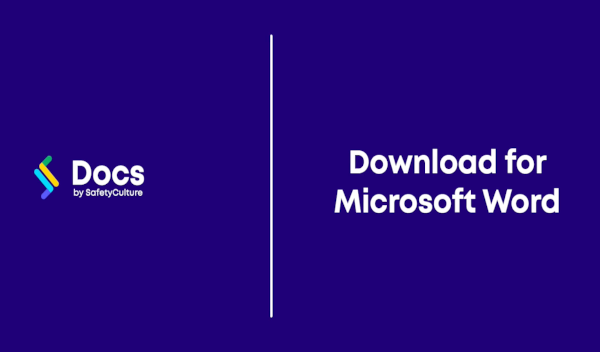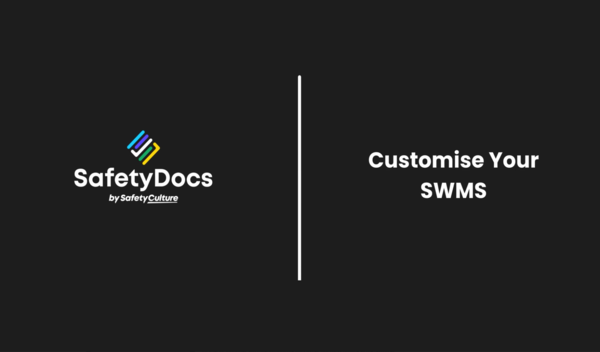Concrete Foundations Excavating - Pouring Safe Work Method Statement
- Instant Document Delivery via Email.
- Add to your existing management system.
- Can assist in ensuring workers are adequately trained.
- Customisation instructions provided.
- Microsoft Word Format (Fully editable).
- Only pay once (no subscriptions required).
Concrete Foundations Excavating - Pouring Safe Work Method Statement (SWMS)
This Concrete Foundations Excavating - Pouring Safe Work Method Statement (SWMS) covers safe practices and controls for the excavation, steel setting, and pouring of concrete foundations/footings.
Job Steps Covered in Concrete Foundations Excavating - Pouring SWMS
- Planning: Establishes a proactive approach to hazard identification and resource allocation.
- Arrival On-site & Assess On-site Conditions: Focuses on initial site assessment and preparation.
- Check Weather Conditions & Prepare: Addresses the impact of weather on safety and work scheduling.
- Work Area Set-up: Guides the establishment of a secure and efficient work zone.
- Environment: Emphasises environmental protection measures during operations.
- Housekeeping: Highlights the importance of maintaining a tidy worksite.
- Manual Tasks: Advises on reducing risks associated with manual handling.
- Delivery & Removal of Plant: Outlines safe practices for equipment transport.
- Materials Delivery: Safe handling and storage of materials.
- Setting-out/Profiling Building Lines: Guides accurate site marking.
- Excavating Foundations: Details safe excavation practices.
- Setting Trench Steel Reinforcement: Provides instructions for safety while reinforcing trenches.
- Concrete Pour: Covers the safe execution of concrete pouring.
- Setting Starter Bars/Column Bolts: Focuses on the safe installation of starter bars and column bolts.
- Re-fuelling Small Engine Equipment On-site: Outlines safe refuelling practices.
- On Completion: Details the wrap-up and site clearance process.
- Emergency Response: Prepares workers for efficient incident handling.
Each purchase of our SWMS comes with a complimentary copy of the Legislation & Codes of Practice Reference List, valued at $19.95. This valuable resource provides an up-to-date overview of relevant laws and standards, further supporting your compliance efforts.
Key Features of the SWMS
- High-Risk Construction Work (HRCW) Controls: Identifies and mitigates risks associated with HRCW.
- Comprehensive Hazard Management: Offers a systematic approach to identifying and controlling potential hazards.
- User-Friendly Format: Designed for easy understanding and implementation by all workers.
- Regulatory Compliance: Adherence to current safety standards and legislation.
Who is it Suitable For?
- Foundation Contractors
- Construction Firms
- Public Works Departments
- Site Supervisors
Ensure your team operates safely and efficiently on every project. Purchase the Concrete Foundations Excavating - Pouring SWMS today and set a standard for workplace safety and regulatory compliance.
- Instant Document Delivery via Email.
- Add to your existing management system.
- Can assist in ensuring workers are adequately trained.
- Customisation instructions provided.
- Microsoft Word Format (Fully editable).
- Only pay once (no subscriptions required).
Concrete Foundations Excavating - Pouring Safe Work Method Statement (SWMS)
This Concrete Foundations Excavating - Pouring Safe Work Method Statement (SWMS) covers safe practices and controls for the excavation, steel setting, and pouring of concrete foundations/footings.
Job Steps Covered in Concrete Foundations Excavating - Pouring SWMS
- Planning: Establishes a proactive approach to hazard identification and resource allocation.
- Arrival On-site & Assess On-site Conditions: Focuses on initial site assessment and preparation.
- Check Weather Conditions & Prepare: Addresses the impact of weather on safety and work scheduling.
- Work Area Set-up: Guides the establishment of a secure and efficient work zone.
- Environment: Emphasises environmental protection measures during operations.
- Housekeeping: Highlights the importance of maintaining a tidy worksite.
- Manual Tasks: Advises on reducing risks associated with manual handling.
- Delivery & Removal of Plant: Outlines safe practices for equipment transport.
- Materials Delivery: Safe handling and storage of materials.
- Setting-out/Profiling Building Lines: Guides accurate site marking.
- Excavating Foundations: Details safe excavation practices.
- Setting Trench Steel Reinforcement: Provides instructions for safety while reinforcing trenches.
- Concrete Pour: Covers the safe execution of concrete pouring.
- Setting Starter Bars/Column Bolts: Focuses on the safe installation of starter bars and column bolts.
- Re-fuelling Small Engine Equipment On-site: Outlines safe refuelling practices.
- On Completion: Details the wrap-up and site clearance process.
- Emergency Response: Prepares workers for efficient incident handling.
Each purchase of our SWMS comes with a complimentary copy of the Legislation & Codes of Practice Reference List, valued at $19.95. This valuable resource provides an up-to-date overview of relevant laws and standards, further supporting your compliance efforts.
Key Features of the SWMS
- High-Risk Construction Work (HRCW) Controls: Identifies and mitigates risks associated with HRCW.
- Comprehensive Hazard Management: Offers a systematic approach to identifying and controlling potential hazards.
- User-Friendly Format: Designed for easy understanding and implementation by all workers.
- Regulatory Compliance: Adherence to current safety standards and legislation.
Who is it Suitable For?
- Foundation Contractors
- Construction Firms
- Public Works Departments
- Site Supervisors
Ensure your team operates safely and efficiently on every project. Purchase the Concrete Foundations Excavating - Pouring SWMS today and set a standard for workplace safety and regulatory compliance.


